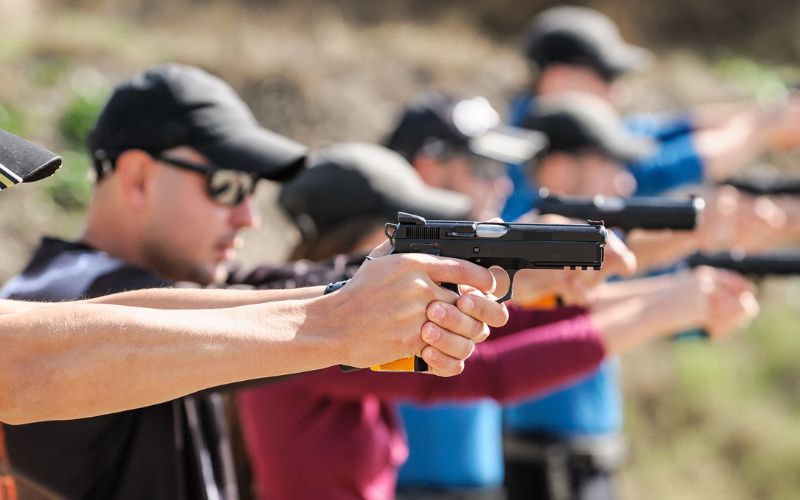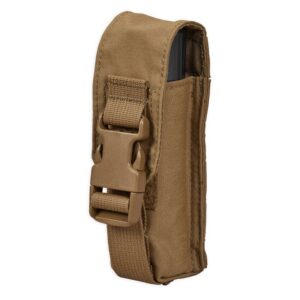Tactical Gear For Self-Defense: Essential Tools To Protect Yourself

In a world where personal safety can be a growing concern, the importance of being prepared cannot be overstated. Whether walking alone at night, traveling to unfamiliar areas, or simply wanting to feel secure daily, having the right self-defense gear can make all the difference. Tactical gear designed for self-defense has become increasingly popular due to its effectiveness, reliability, and adaptability.
This blog will explore the essential tactical gear items you should consider for self-defense, offering insights into their uses and how they can be integrated into your daily routine.
Understanding Tactical Gear

Tactical gear, often associated with military or law enforcement use, refers to military equipment designed for high performance, durability, and practicality. While traditionally used in professional settings, these items have become more accessible to civilians seeking to protect themselves. Tactical gear for self-defense typically includes tactical flashlights, knives, pepper spray, stun guns, body armor, and more.
Understanding your needs and environment is the key to selecting the right tactical gear. Whether you live in an urban area, frequently travel alone, or are concerned about home security, there’s tactical gear tailored to suit your situation.
1. Tactical Flashlights: Illuminating Your Path To Safety
A tactical flashlight is one of the most versatile and essential pieces of self-defense gear. Unlike regular flashlights, tactical flashlights are designed to be more durable and brighter and often come with features like strobe functions or beveled edges for self-defense.
Why You Need It
- Blinding Potential Threats: The intense brightness of a tactical flashlight can temporarily blind an attacker, giving you precious seconds to escape.
- Durability: Flashlights are built to withstand harsh conditions, making them reliable in emergencies.
- Multi-functionality: Many tactical flashlights include features like strobe lights or can be used as an improvised striking tool.
How To Use It
Carry your tactical flashlight in an easily accessible place, such as a pocket or bag. If you feel threatened, shine the light directly into the attacker’s eyes. This disorienting flash and survival skill can give you a moment to run to safety or prepare other defensive measures.
2. Pepper Spray: A Reliable And Non-Lethal Defense Tool
Pepper spray is a widely utilized self-defense aerosol for its accessibility, ease of deployment, and efficacy. It comprises capsaicinoids, the active components derived from chili peppers. Capsaicinoids induce severe ocular and respiratory effects upon exposure, including intense pain, temporary vision impairment, and respiratory distress.
Why You Need It
- Non-lethal: Pepper spray provides an effective means of defense without the risk of lethal harm.
- Ease of Use: It’s simple to deploy, even under stress, making it ideal for quick responses.
- Range: Pepper spray typically encompasses a range of up to 10 feet, enabling individuals to maintain a secure distance from potential assailants.
How To Use It
When threatened, aim the spray at the attacker’s face, focusing on the eyes. Ensure you know how to unlock and use your pepper spray quickly, as hesitation can reduce its effectiveness. Practice using it in a safe environment to build muscle memory.
3. Tactical Knives: The Ultimate Close-Combat Tool
A knife is a powerful self-defense tactical tool for emergencies, especially in close-combat situations. These knives are designed for durability and effectiveness, with features such as serrated edges, finger guards, and easy-grip handles.
Why You Need It
- Versatility: Beyond self-defense, tactical knives can be used for various survival situations, such as cutting through obstacles or preparing food.
- Durability: Made from high-quality materials, these knives are built to last and perform in tough conditions.
- Compactness: Many tactical knives are foldable and compact, making them easy to carry discreetly.
How To Use It
A tactical knife should only be used as a last resort when other self-defense measures have failed, and your life is in immediate danger. Ensure you are trained in basic knife defense techniques to maximize its effectiveness and avoid accidental injury.
4. Stun Guns And Tasers: Disabling The Threat

Many people choose stun guns and tasers for self-defense because they are non-lethal, and they must have tactical gear for survival situations. These tools use electric shocks to temporarily stop an attacker so that you can get away and find help.
Why You Need It
- Immediate Incapacitation: A well-placed shock can instantly disable an attacker, giving you time to flee.
- Non-lethal: Like pepper spray, these tools offer a non-lethal way to defend yourself.
- Easy to Use: Stun guns and tasers are designed for quick, intuitive use, even in high-stress situations.
How To Use It
Carry your stun gun or taser in a location that allows quick access. Aim for the attacker’s torso or other large muscle groups when threatened. Press the device firmly against the attacker and activate it. The electric shock will cause pain and muscle contractions, giving you time to escape.
5. Body Armor: Shielding Yourself from Harm
Body armor isn’t just for military or law enforcement personnel; it’s an increasingly popular option for civilians concerned about personal safety. Different types of body armor can provide life-saving protection at various threat levels.
Why You Need It
- Protection from Projectiles: Body armor works effectively against bullets, stab wounds, and other forms of physical assault.
- Peace of Mind: Knowing you have an added layer of protection can boost your confidence in potentially dangerous situations.
- Variety: Body armor comes in various levels of protection, from lightweight vests to more robust options, allowing you to choose based on your needs.
How To Use It
Choose body armor that fits comfortably and meets your specific needs. If you’re concerned about regular protection, consider lighter, more discreet options that can be worn under clothing. For higher-risk situations, opt for armor with higher protection levels.
6. Tactical Gloves: Enhancing Grip And Protection
Tactical gloves are an often-overlooked piece of self-defense gear that can provide significant benefits. These gloves protect your hands while enhancing your grip on other tactical tools, such as knives or flashlights.
Why You Need It
- Hand Protection: Protecting your hands is crucial in a self-defense situation. Tactical gloves can shield you from cuts, abrasions, and impacts.
- Improved Grip: These gloves’ enhanced grip can make wielding other defensive tools easier.
- Multi-purpose: Tactical gloves are versatile and can be used for various tasks, from self-defense to outdoor activities.
How To Use It
Wear your tactical gloves when you anticipate needing to defend yourself or handle rough objects. They can also be part of your everyday carry (EDC) kit and are ready for use.
7. Self-Defense Keychains: Small, Simple, Effective
Self-defense keychains are compact, easy-to-carry tools that can pack a surprising punch. They often feature pointed ends, knuckles, or other elements to enhance one’s ability to strike an attacker.
Why You Need It
- Portability: These keychains are small enough to be carried everywhere, ensuring you’re always prepared.
- Ease of Use: They’re straightforward, requiring no special training.
- Surprise Factor: An attacker may not expect such a small object to be capable of causing significant harm, giving you an advantage.
How To Use It
Carry your self-defense keychain with your keys, ensuring it’s always within reach. In an emergency, hold the keychain in your fist with the pointed end or knuckles facing outward and use it to strike vulnerable areas like the eyes, throat, or groin.
8. Personal Alarms: Drawing Attention When You Need It Most
A personal alarm is a compact, mobile gadget that emits a high-decibel siren when activated. It aims to draw attention to your situation, potentially scaring off an attacker or attracting help.
Why You Need It
- Non-violent: A personal alarm is an excellent option if you prefer a non-violent method of self-defense.
- Attention-Grabbing: The loud noise can deter attackers and alert others to your need for help.
- User-Friendly: Personal alarms are easy to carry and activate, making them accessible to everyone.
How To Use
Attach the personal alarm to your keys, bug-out bag, or clothing. If you feel threatened, activate the alarm by pulling the pin or pressing the button. The loud noise will likely draw attention and give you time to escape.
Conclusion: Choosing The Right Tactical Gear For You
When it comes to self-defense, being prepared is the best strategy. Tactical gear offers a range of tools designed to protect you in various situations. From tactical flashlights and knives to pepper spray and personal alarms, the options are vast, allowing you to choose what best suits your lifestyle and concerns.
Before purchasing any tactical gear, consider the legal implications in your area, as some items may be restricted or require permits. Additionally, practice using your gear to ensure you can deploy it effectively in an emergency.
Frequently Asked Questions
How Is A Stun Gun Different From A Taser?
Both stun guns and tasers deliver electric shocks to incapacitate an attacker, but they work differently. A stun gun requires direct contact with the attacker, while a taser can be used from a distance by firing projectiles that deliver the shock. Tasers are typically more expensive and may require special permits.
How Do I Choose The Right Tactical Gear For My Needs?
Choosing the right tactical gear depends on your environment, lifestyle, and specific concerns. When considering options, consider how easy they are to use and move around and any legal rules that might apply.


